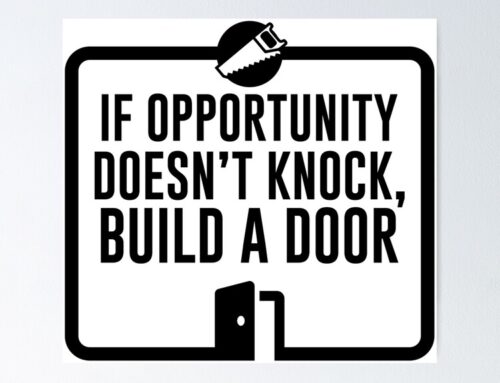A Guide To Successful Virtual Events: Tools And Tips To Drive Revenue, Engagement & ROI
Event marketing is undergoing a digital transformation, driven by travel and meeting restrictions due to Covid-19. In the past, CMOs spent 25% to 30% of their budgets on in-person meetings and events, according to research by Frost and Sullivan. Today, this sector is among the hardest hit by the pandemic.
Now, businesses are scrambling to convert to online events and continue global operations. This rush to digital isn’t stopping anytime soon. Research from Aventri showed that 91% of global event organizers said virtual will remain critical when in-person events return.
Organizers plan to incorporate virtual elements into their long-term strategies as a way to reduce risk, expand audience reach and provide new sponsorship opportunities.
While nothing beats face-to-face meetings for closing deals and building partnerships, virtual and hybrid events have distinct benefits. Now is the time to start taking advantage of these tools. Here are three proven ways modern virtual and hybrid platforms drive engagement and return on investment (ROI).
1. Monetize Virtual EventsSo much revenue comes from sponsorships; connecting buyers and sellers is key to event success. Fortunately, virtual sponsorships give partners plenty of opportunities to build brand awareness and capture qualified leads.
Develop Immersive Showroom Experiences
At virtual exhibit booths, buyers and sellers can connect in real-time during live presentations, chats and one-on-one video conversations. Sponsors gain valuable insights on their target audience through Q&As, polls and surveys at their booths. After the event, they receive the contact info of booth visitors as well as engagement data, such as dwell time, repeat visits and questions asked. Savvy sponsors leverage this business intelligence to inform future marketing efforts and product development.
Provide Branding Opportunities
Virtual venues present many options for sponsor recognition. For starters, feature high-level sponsors via video messages in the reception lobby. This is the welcome page where attendees land after logging into the event.
Go beyond standard mentions on the event website and registration page. Also showcase sponsors in your:
- Online exhibit hall;
- Main stage;
- Networking spaces;
- Social media channels;
- Rotating ad banners promoting breakouts;
- Gamification with sponsor messaging; and
- Digital show bags where attendees store event content of interest.
As in face-to-face events, virtual sponsors host sessions and roundtables led by experts and influencers. Sessions are promoted through multiple channels, including emails and push notifications to attendees who expressed interest in the topic.
Many virtual event providers also feature high-profile speakers in video snippets that they share far and wide through social media. Build sponsor visibility through event-highlight stories distributed to media and stakeholders. Also, include video highlights in content promoting next year’s event.
Create More Revenue Potential
Why limit sales to the day of your conference? Digital libraries enable marketers to create a new revenue stream — conference recordings — that they sell and use as lead magnets long after the live event ends.
Marketers can optimize digital libraries for a four-in-one payoff:
- They sell sponsorships allowing partners to give their customers free access to the library for one session that’s in high demand.
- By allowing limited free access, marketers get new, qualified leads into their systems.
- Many of these leads return to buy more content.
- Marketers also find that offering great content to sponsors’ customers helps drive registration for future events.
2. Keep Virtual Attendees Engaged
Attendees have high expectations, and they’re always one click away from leaving your event. Add to that, distractions while working at home are endless. So how do you keep remote attendees tuned in?
Create An Interactive Journey
The answer starts with tailoring content to attendees’ ability to consume it. If this is their first virtual event, choose a clean, simple format and focus on engaging your audience.
Also forget top-down, webinar-style presentations and make sessions interactive. These tools and tactics below ratchet up attendee engagement and give organizers instant metrics on event performance:
- Take cues from Netflix and Amazon, recommendation engines offer personalized session suggestions based on the attendee’s online behavior.
- Real-time polls and surveys enable speakers to customize their sessions to audience needs. Using chat, Q&A and gamification, speakers also break up sessions and make attendees feel like they’re part of the conversation.
- Select your best content and split it into consumable pieces of no more than one hour.
- Invite attendees to access recorded content at their convenience in your digital library. The ability to consume content on-demand adds value and keeps attendees coming back.
Don’t Forget Virtual Networking
Of course, a major value proposition of face-to-face events is the people-to-people connections. To avoid losing this, get virtual attendees involved early and often.
Schedule virtual networking time into the agenda. Online lobbies and networking lounges bring people together between sessions.
Modern platforms use event marketing and registration data to connect attendees, speakers and exhibitors with shared interests. You can encourage networking among like-minded participants through virtual cocktail parties, group chats and meet-ups.
Virtual platforms cannot replicate face-to-face gatherings, but they do enable rich one-on-one networking. Make it easy for sponsors and attendees to connect. If they know a great prospect is at the conference, let them click that person’s name on a list and do a video chat.
Virtual speed networking is also gaining traction. These tools use artificial intelligence to match participants with common interests. Networkers mingle for a few minutes before moving onto the next conversation. When introductions go well, they exchange contact info and schedule follow-up meetings for more in-depth discussions.
3. Gain Marketing Intelligence
Events collect a wealth of attendee engagement data. This information is easier to capture and analyze when events are online.
For virtual attendees who opt-in, every action is trackable, including booths visited, pages viewed, content downloaded, meetings scheduled, sessions attended, questions asked, languages spoken, as well as poll responses and dwell times.
Combine online and offline event data for keen insights to improve future meetings and conferences.
Also, integrate data from your event and digital marketing systems. You’ll create a more comprehensive picture of buyer preferences and pain points. This business intelligence can help guide things like:
- Audience list development;
- Lead generation;
- Content strategy;
- Product development; and
- Sales and marketing priorities.
Using a multi-touch attribution model over the long term, you can quantify the ROI of your digital event. What’s more, robust analytics tools provide valuable insights to inform future sales and marketing strategies.
Will virtual replace in-person gatherings? Absolutely not. For converting leads and getting business done, nothing beats meeting face-to-face. Still, modern virtual event platforms offer advantages marketers cannot ignore.
This is why I believe hybrid is the future of event marketing. Moving forward, online and offline formats work hand-in-hand. The onsite event will become more valuable because it’s supported by a rich virtual experience.
Article By: Jim Sharpe @ Aventri
_______________________________________________________________

206-391-5682
i2i@i2idirectmarketing.com
www.i2idirectmarketing.com
“…all deliveries GPS tracked…”





